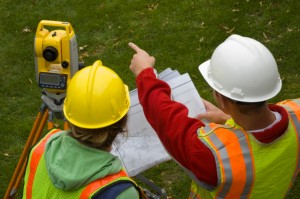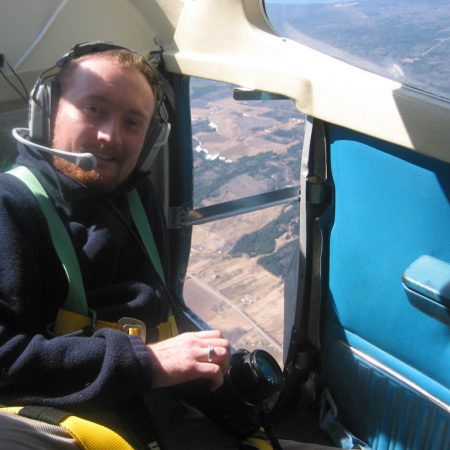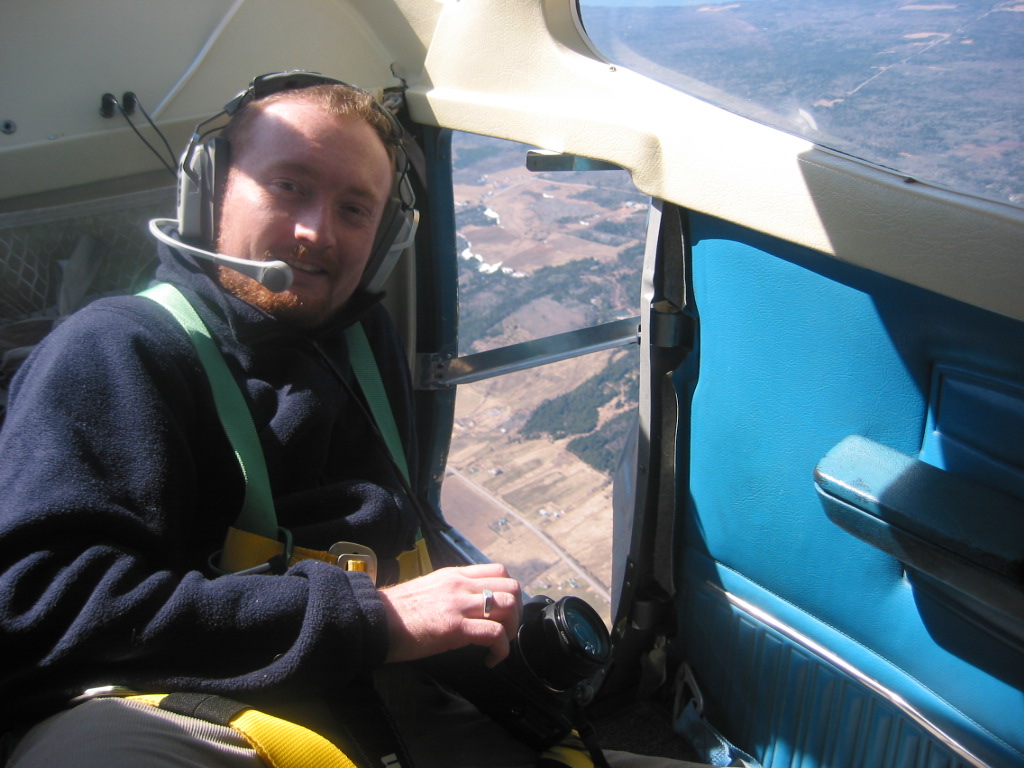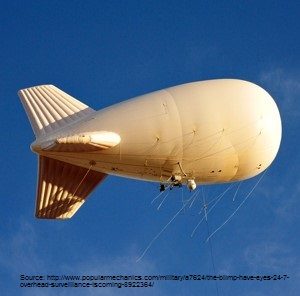Bridging the Gap Between GIS Job Seekers and Surveying Jobs in Canada
Many Canadian survey associations have been grappling with a declining membership and an increasing median age of survey professionals. There are worries that as baby boomers retire, there will be a crisis in this part of the geospatial sector as there will not be enough surveyors to fill the positions. We are seeing this problem now, but the reality is that it is only going to get worse. For years, survey companies, especially those in Western Canada, have been struggling to recruit not only surveyors but also entry level workers like chainmen and party chiefs. However, while this branch of the Canadian geospatial sector has been struggling to find enough human resources, another has been putting out far too many resources. I’m talking, of course, about the GIS post diploma graduates who are being produced in staggering numbers from colleges and universities across Canada each year. It is my strong belief that The Canadian Geomatics Environmental Scan and Economic Value Study being done right now will corroborate my conclusions.
There are four university programs for geomatics engineers in Canada: The University of Calgary, York University, Laval University, and the University of New Brunswick. Contrast this to the dozens of post-diploma GIS programs in Canada churning out newly minted GIS specialists each year.
For years now, the Canadian Geomatics Community Round Table (CGCRT) has been working on identifying the issues relating to our sector and examining actions to deal with those issues. I submit the following: that the lack of coordination and understanding of the human resource needs of our sector have created serious challenges for both surveying businesses and GIS graduates.
To put it bluntly, there are two separate but related issues occurring in the Canadian geospatial sector:
- Survey companies are struggling to find recruits and this is having an impact on the growth of our sector
- GIS graduates are struggling to find work and some are even leaving the sector
A mechanism to assist unemployed or underemployed geospatial graduates should be created. In the geomatics career seminars I’ve given over the past four years, I’ve come face to face with the issue of GIS post graduates struggling to find work, sometimes for years, with their student loans weighing down on them. In Central Canada it’s not unusual for one GIS job posting to receive hundreds of applications. At my seminars, I have explained to the grads how hot the survey job market is, and asked if they would consider moving to that corner of the sector. Almost unanimously they indicate willingness to train for these jobs. At this point in their lives young hopeful post diploma GIS graduates are most mobile and willing to move west for jobs if given the opportunity.
With that being the case, I have been exploring a measure that could work to the benefits of the survey community and the underemployed GIS graduates. I spoke with some GoGeomatics survey clients and proposed the following idea: Why not hire more GIS graduates to fill the gap? They could fill entry level positions with GIS graduates who are struggling to find work. Of course, this is not their ideal solution. These companies prefer candidates with a geomatics technologist  background, and they know there would be a lot of training involved to move these GIS grads up to the level of party chief and even full-blown licensed surveyors. But they all indicated a willingness to pursue this existing source of human resources. After all, the GIS graduates have an understanding of geospatial technology and the fundamentals of our sector. They would seem to be prime candidates to fill the waiting slots for entry level jobs at survey companies. Then, as they gain experience and see the opportunities for advancement, they can move towards being fully accredited surveyors. Surveying is a lucrative and rewarding profession in Canada. Why not give these young people the chance to fall in love with this career path?
background, and they know there would be a lot of training involved to move these GIS grads up to the level of party chief and even full-blown licensed surveyors. But they all indicated a willingness to pursue this existing source of human resources. After all, the GIS graduates have an understanding of geospatial technology and the fundamentals of our sector. They would seem to be prime candidates to fill the waiting slots for entry level jobs at survey companies. Then, as they gain experience and see the opportunities for advancement, they can move towards being fully accredited surveyors. Surveying is a lucrative and rewarding profession in Canada. Why not give these young people the chance to fall in love with this career path?
But I see even greater opportunities for our sector. Following is an idea for a program I propose could meet our sector’s needs.
Industry, schools, and government could come together to create a six to eight week skills-based program targeting GIS graduates who are interested in the survey field. By helping to design the program, survey companies will ensure they acquire graduates with skill-sets that are valuable to them. Students would sign contracts of employment before they begin the program, guaranteeing companies a set number of new candidates. The program would be funded through a combination of government and industry.
This solution would provide enormous benefits for both parties. The survey companies get a reliable stream of new recruits that will have the skills they need for entry level positions. The GIS graduates would gain steady work in a growing sector of the geospatial job market. To me, this is a win-win for two groups whose struggles will only continue to get worse without some kind of action. Of course, my ideas are just the beginning, and need to be fleshed out in great detail. It is my hope that this idea will be discussed by sharper minds than mine. What do you think? Is there something to work with here?









There is some logic in your argument but in my view a missing part of the discussion is to examine why the GIS graduates are not employable. It seems to me that with the rapidly changing technology landscape the role of the GIS practicioner is vastly different from what is likely being taught in technical schools and univerities. Like many other parts of our education system there is a disconnect between what the market needs and what the students learn. Educational institutions typically don’t see themselves as training for the job market but education for its own sake. Hence we have people who have good education but the wrong skills for the market. The surveying community has probably addressed this better than most beacuse they set the educational requirements for entry and then monitor the progress of individuals through practial work. A similar condition does not exist in the GIS world where its much more of a free for all. This partly due to the wide range of potential geospatial applications that are becoming more common day by day. We are moving from the practioner domain [20%%] to the end user domain [80%]where almost anyone can perform simple GIS type tasks. So as long as we are only looking at the 20% level we have a problem.
Jon,
You suggest an elegant way to solve the problem – I like it – it shows flexibility and reality.
The engineering community experiences a similar problem to the surveyors. To overcome it, many large CAD companies have shifted to meet the challenge by creating more products with automated features. The result is more products become automated (such as automated image analysis, automated-robotic total stations etc.)
Ultimately, the problem you identify is a result of geomatics in Canada being successful. The next (and critical step) in my view is for the country to more highly promote spatial awareness in daily lives of people so deeper integration job creation can be realized in the country. Otherwise we are only selling technology to a limited bandwidth.
Jon:
Having lived through the transition from NSLSI to COGS, I have a certain familiarity with the two cultures: Surveyors and Geographic Scientists. It would seem to me that your suggestion would present a wonderful opportunity for this small specialized institution. There would be the opportunity to redefine the curriculum to give technical graduates a modern combination of field and desk skills. I think that this combination is what graduates are seeking, and industry demands.
This change could be placed in the wider social context of public ‘spatial awareness’.
Let me know if i can help in any way.
Regards,
Bob
Following on from Bob Maher’s comment:
BCIT in Burnaby/Vancouver should be in a similar situation to COGS in NS, except it has two separate departments. Geomatics for surveying diplomas and now degrees, and GIS for GIS advanced diplomas.
Hiiii Jon Murphy…
You write a much interesting blog entry and its a good source of discussion part for IS Job Seekers and IT Recruiting Vanconuver. That specializing in the IT recruiting and marketing jobs in Vancouver.